Upcoming Scientific Fieldwork, 2023 and Beyond
Climate School researchers are carrying out fieldwork on every continent and every ocean. A guide to upcoming projects.
THIS LIST IS OUTDATED AS OF MARCH 29, 2024. CLICK HERE FOR THE NEW LIST.
Field researchers with the Columbia Climate School are studying the dynamics of the planet on every continent and every ocean, from big cities to the poles. Projects range from climate to basic geology, natural hazards, pollution, new sustainable technologies and more. Dependent on logistics and safety factors, journalists are invited to join expeditions or otherwise cover.
Expeditions are in rough chronological order, divided into NEW YORK CITY/U.S. NORTHEAST; WIDER UNITED STATES; and INTERNATIONAL. Unless otherwise stated, projects originate with our Lamont-Doherty Earth Observatory. This list will be kept updated; check back periodically. Contact: senior science editor Kevin Krajick [email protected], 917-361-7766.
NEW YORK CITY/U.S. NORTHEAST
WILD CITY | Surveys of urban wildlife, New York City | ONGOING
Although it is the most densely populated U.S. city, New York is home to many wild animals including foxes and raccoons, along with recent additions such as coyotes and river otters. With expanding green spaces, populations are probably growing. Grad students are censusing these creatures and investigating patterns of movement and dispersal in parks, cemeteries, community gardens and other areas. Headed by epidemiologist Maria Diuk-Wasser, one part of the team is deploying camera traps in Brooklyn, Queens and Long Island’s Nassau County. Another team is physically trapping animals to sample them for diseases and vectors such as ticks, and tag them with GPS monitors to track their movements. Part of the aim is to minimize adverse animal-human interactions including the spread of diseases. Story on the project
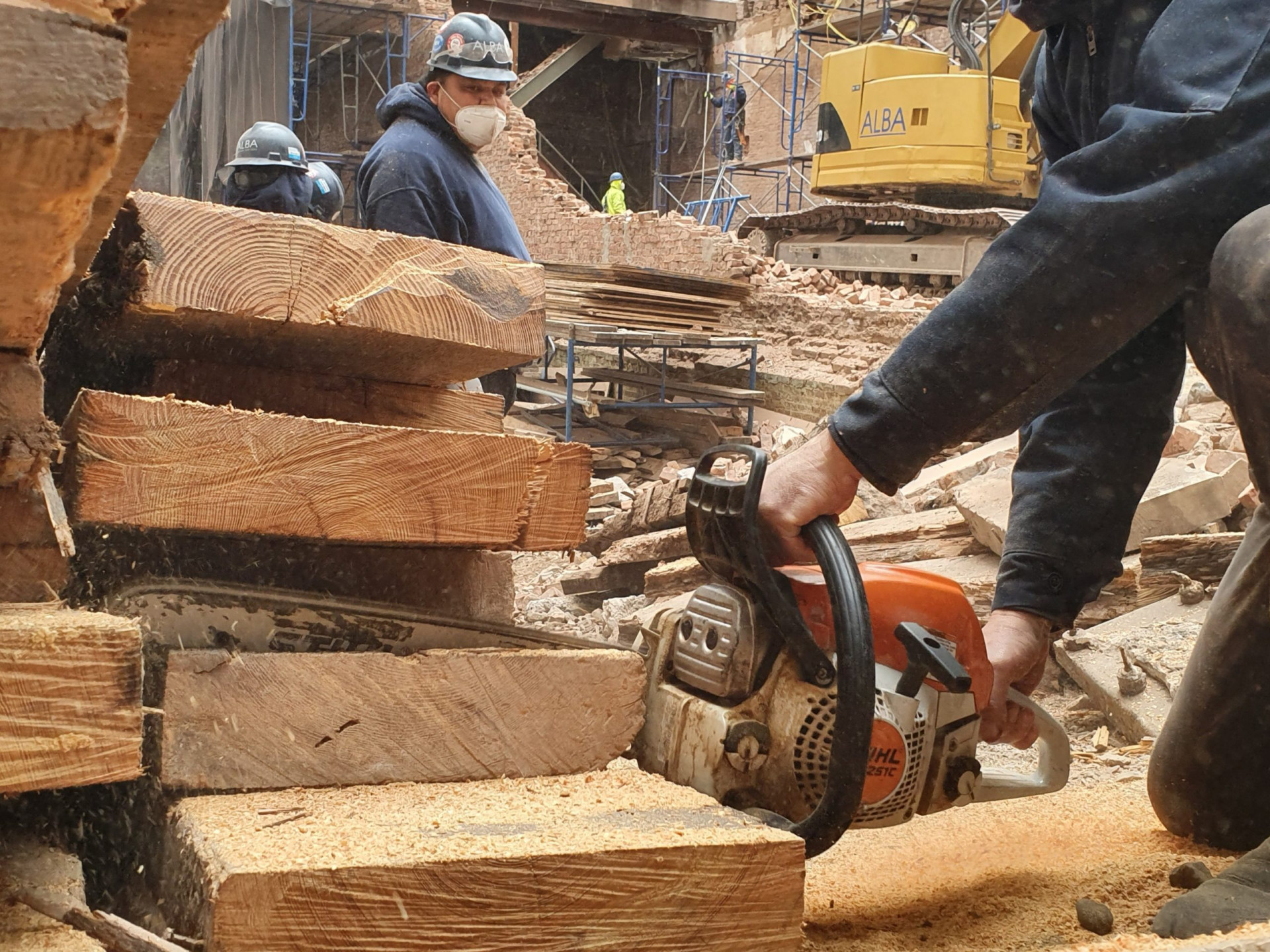
NYC’S ANCIENT TREES | Sampling timbers from old buildings | ONGOING
Many New York structures built in the 19th and early 20th centuries are framed inside with massive timbers—in many cases, now the sole remnants of eastern old-growth forests erased to help create the metropolis. Tree-ring scientists Caroline Leland and Mukund Palat Rao are salvaging these rare artifacts from the numerous demolitions of old buildings done every year to study past climates. Some tree rings record yearly weather conditions going back to the 1500s—data available nowhere else. The scientists are working with professional salvagers to obtain new specimens. Story on the project
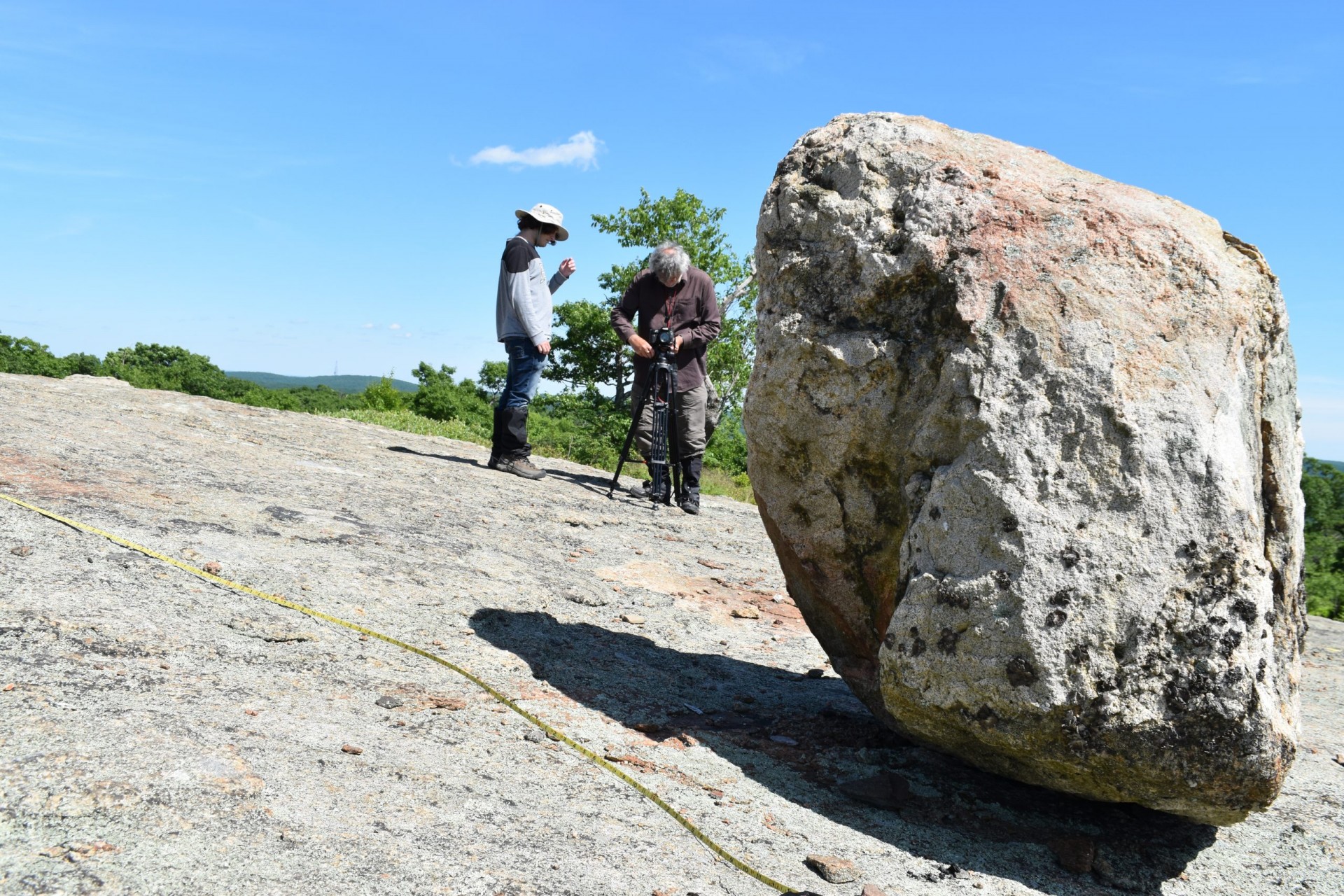
PRECARIOUS BOULDERS | Geological fieldwork to detect past earthquakes | Harriman State Park, N.Y. | SUMMER 2023
Recent research suggests that earthquake risk to the New York City metro area is greater than previously thought—but no one knows the maximum size of past earthquakes. To extend the record into prehistoric time, geologist William Menke and students are focusing on huge boulders that have been precariously perched on the bedrock surface of exurban Harriman State Park since the end of the last ice age, and calculating the minimum forces that would be needed to tip them over. If they are still standing, the hypothesis goes, an earthquake of that magnitude has not occurred in the past 20,000 years. Story on the project | Earthquake Risk to NY Greater Than Thought
LYME THREAT | Studies of human/tick contacts, New York City | SUMMER 2023
In the first such effort in an urban green space, researchers are carrying out a multidisciplinary project to map where and how city residents are being exposed to Lyme disease–carrying ticks. Researchers are tracking movements of tick-carrying deer via radio tags, surveying parks and nearby private yards for ticks, and characterizing which landscape features encourage tick presence. Citizen volunteers are using a smartphone app to track their own movements. Led by epidemiologist Maria Diuk-Wasser. Project webpage
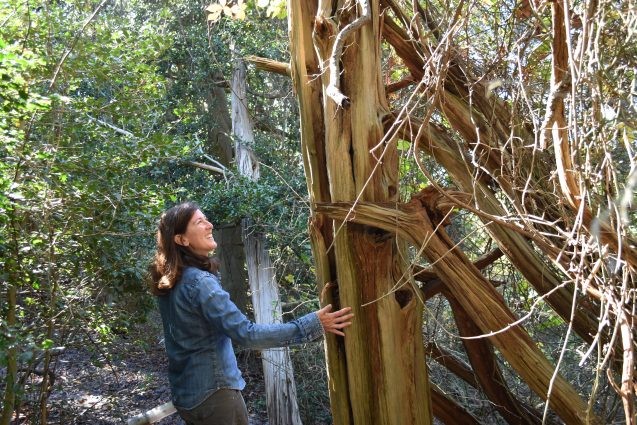
SEASIDE METHUSELAHS | Tree-ring sampling, coastal NY/NJ and further south | SUMMER/FALL 2023
Only a few small stands of seaside old-growth forest have survived along the U.S. East Coast, and these are under lethal threat from salt water infiltrating from climate-driven rising seas and powerful storms. Paleoclimatologist Nicole Davi is sampling rings from these trees, some dating to the mid-1700s, and installing instruments on some to record physiological reactions to weather in real time. The project aims to chart the region’s weather history, and project future effects of climate change. Work at Long Island’s Montauk Downs State Park and Fire Island National Park, and New Jersey’s Sandy Hook peninsula, Cattus Island, Lighthouse Center and Jakes Landing. Story and slideshow on Sandy Hook’s forest
GOTHAM GREENHOUSE | Tracking New York’s emissions by land and air | MAY-AUGUST 2023 AND ONGOING
To better understand the exact sources of greenhouse gases and other pollutants, atmospheric scientist Róisín Commane and colleagues are measuring carbon dioxide, methane and other gases in and around New York City. On the ground, they will sample air from a van containing a mobile lab to quantify emissions from landfills, wastewater plants and natural-gas leaks. In the air, they will fly drones, and instruments on aircraft supplied by NASA and the National Oceanic and Atmospheric Administration, to sample air at both high and very low altitudes. Article on the portable lab | Article on the NYC project | Article on NYC greenery and CO2
WATERS UNDER PRESSURE |Mapping threatened habitats, Long Island Sound | JUNE 13-16, AUG 7-18, SEPT 6-12, 2023 and ONGOING
Oceanographers Frank Nitsche and Cecilia McHugh are part of a project to finely map the bathymetry and bottom habitats of Long Island Sound. Under intense pressure from surrounding land, it is stressed by pollutants including excess nutrients that cause harmful algal blooms and low oxygen levels. This summer they will dredge up sediment samples. Meanwhile, Joaquim Goes and colleagues are investigating algae in particular. After recent studies involving satellite imagery and extensive water sampling, they are now developing an information and decision system for managing these blooms. Mapping project web pages | Article on the algae project
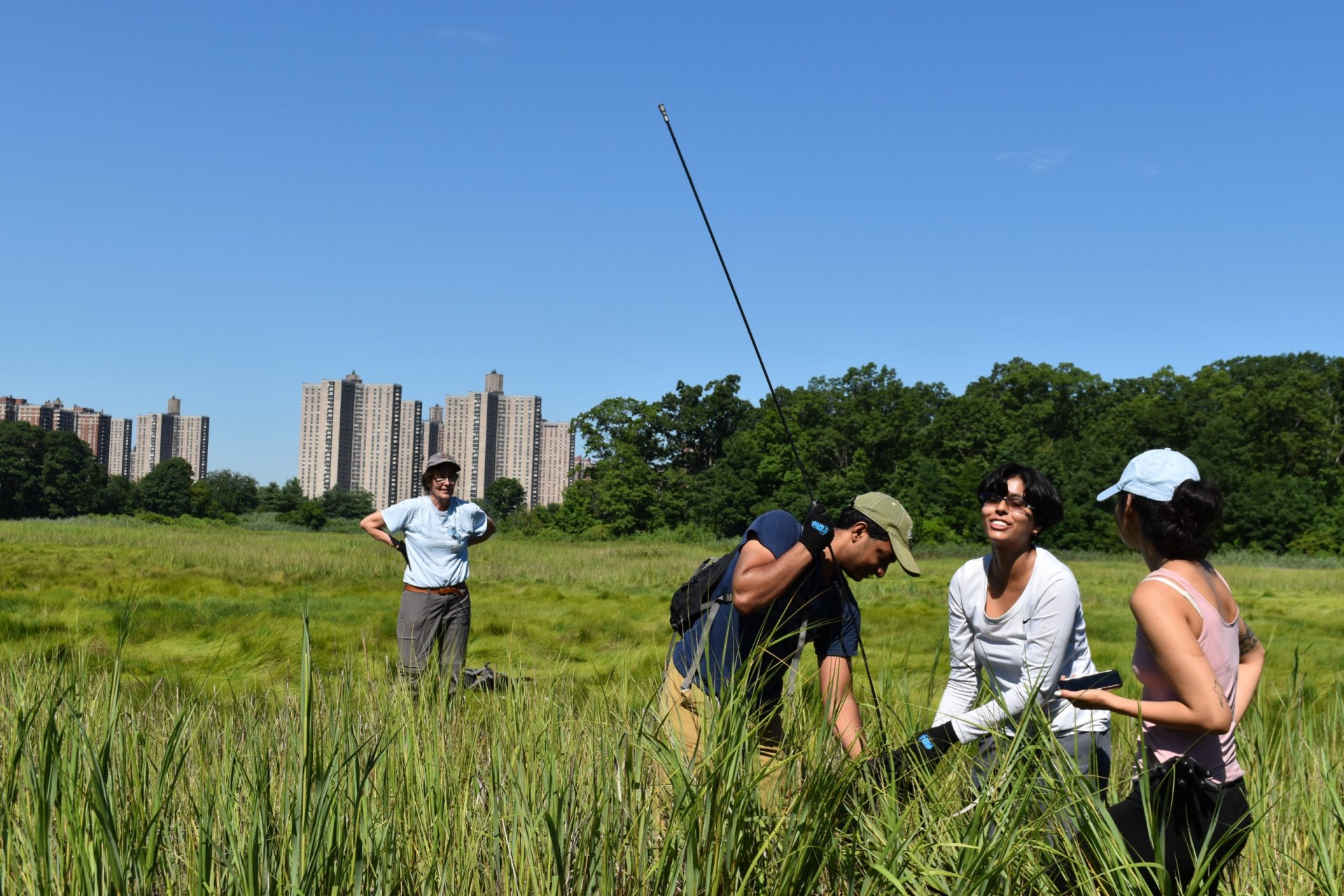
ANCIENT MARSHES | Wetland coring, New York, New Jersey, New England| SPRING-FALL 2023 AND ONGOING
Drilling cores as deep as 25 feet, ecologist Dorothy Peteet studies the scant remnants of the U.S. East Coast’s once vast wetlands. She is taking part in a large-scale NASA project to understand how much carbon is stored in coastal marshes, and how much might be washed away and put back into the air through ongoing sea-level rise. Sites include New York City’s Pelham Bay Park, a patch near JFK Airport, and sites in Long Island and Rhode Island. Further inland, she is studying prehistoric weather and environment using sediment cores from deep lake bottoms, marshes and bogs in New Jersey that have remained undisturbed for the last 15,000-plus years. Article on Peteet’s work
WATERSHED MOMENT | Studies of past climate, Catskill Mountains | SPRING/SUMMER 2023
The New York/New Jersey watershed, comprising the region that drains into New York harbor, includes wide swaths of the Catskill Mountains, whose reservoirs serve 9 million people. As part of an investigation of socioeconomic factors that expose some populations to poor drinking water, paleoclimatologist William D’Andrea will take cores from Catskills lakes, ponds and bogs to study how past climate changes affected water flow over thousands of years. Concurrently, dendrochronologist Nicole Davi will take cores from old Catskills trees to study climate swings in closer detail over hundreds of years.
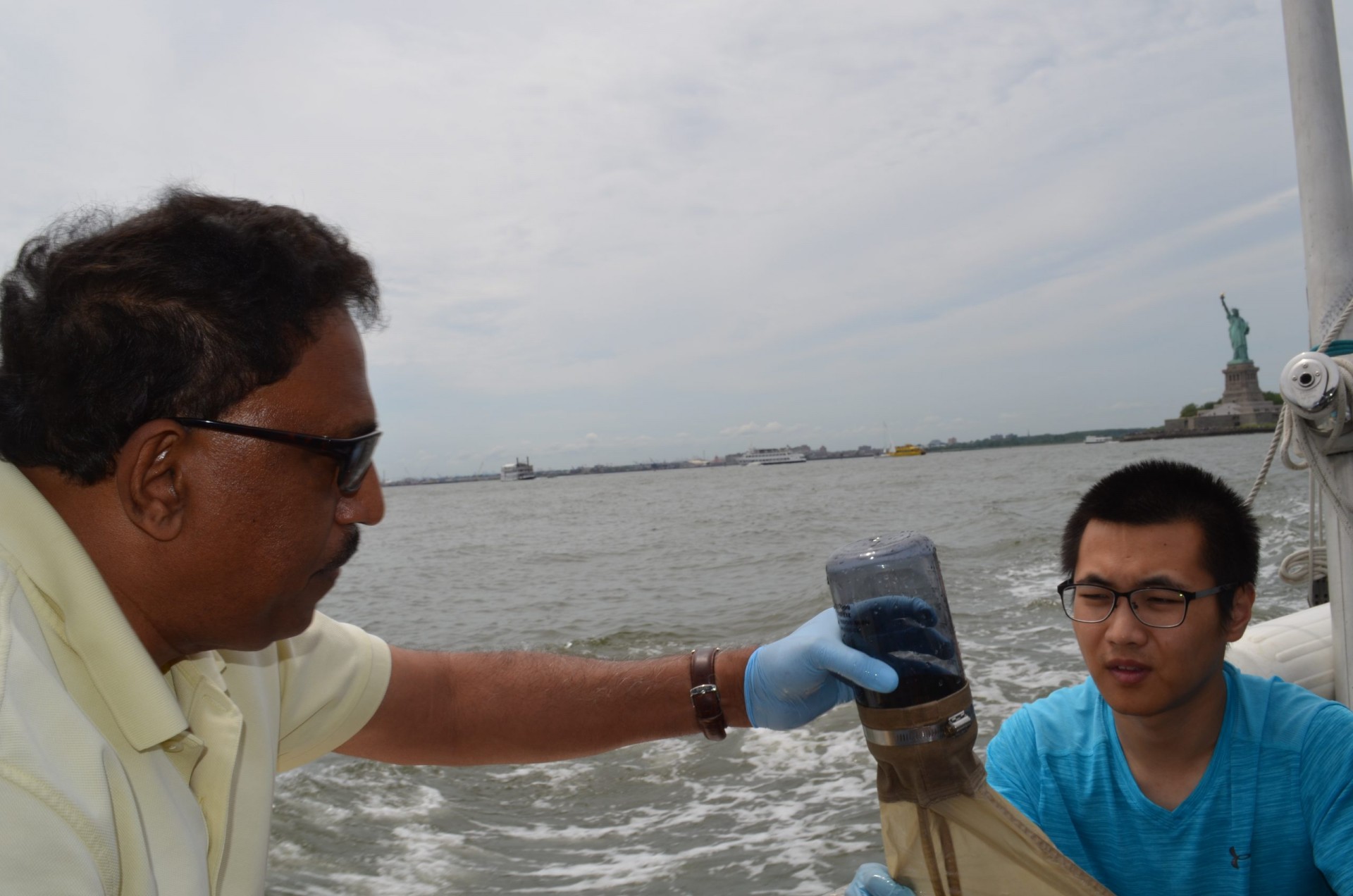
TINY PLASTICS | Studies of micro- and nanoplastics, New York area, Antarctica, other areas|TBD
Vast quantities of microplastics are entering New York area waters, with unknown health effects. Using newly developed technology, oceanographer Joaquim Goes and geochemists Beizhan Yan have been mapping their abundance and sources. Yan and colleagues also recently developed an even newer technology to document a proliferation of nanoplastics—yet tinier plastic bits—in bottled water. As part of a followup, retired British marines are collecting samples of snow and other materials from remote areas of the world for evidence of both micro- and nanoplastics. An expedition to western Antarctica was completed in January 2024, and the samples are now being analyzed. Article on the New York project |Nanoplastics in water | Antarctica expedition
POISONED PONDS | Studies of toxic algae in New York City parks | STARTING SUMMER 2023 and ONGOING
A onetime pleasant pond in Manhattan’s Morningside Park has been overtaken by thick mats of toxic algae. A group led by biological oceanographer Joaquim Goes will study the problem and try to find ways to limit or eliminate it. Work will involve sampling the pond monthly, culturing the organisms in the lab, and testing methods to cleanse the waters, including chemical control and introducing novel bottom substrates. Work may extend to Central Park’s Harlem Meer and other park ponds suffering similar problems. Article on the project
SHELL GAME | Experimental cultivation of oysters, Hudson River | Fall 2023
Most predictions of oyster reefs’ vulnerability to rapidly changing environments are based on lab studies, not observations in natural conditions. Braddock Linsley and Luca Telesca will closely monitor a colony of eastern oysters, Crassostrea virginica, along a pier in Piermont, N.Y. just north of New York City, to track long-term responses to shifting conditions in terms of shell building, feeding, respiration and water filtration. This species is the focus of intensive restoration efforts in numerous estuaries, including New York Harbor; the researchers will focus on the oysters’ response to low oxygen levels and acidification present in many waters, and on their ability to improve water quality.
DEALING WITH RISING SEAS | Consulting on adaptation, Shinnecock Nation, New York | ONGOING, starting fall 2023
The Shinnecock people have from time immemorial dwelled along the seashore of Long Island; half the small tribe’s members now live on a low-lying peninsula that is slowly being inundated by sea-level rise. Economist Malgosia Madajewicz is working closely with tribal authorities to help design adaptation strategies that will allow the people to remain on their land. The project may expand to the nearby town of Mastic Beach, where other Indigenous people live. A partner program is working with Indigenous people along the Virginia shore. Shinnecock Nation website
COMING CLEAN|Technology to filter microplastics from washing machines, New York City | ONGOING 2023-2025
Tiny plastic fibers are polluting air and waters across the world, and recent research shows a major source is the washing of clothes. Geochemist Beizhan Yan says a single three-pound load sends hundreds of thousands of particles into sewers. Municipal waste-treatment systems are not set up to deal with them, so Yan and colleagues are going straight to the source: development of filtration systems to remove them from home and commercial washing machines. After lab work, they will test equipment at Columbia-owned dorms and/or apartment buildings. They are working with manufacturer Whirlpool and a firm that that recycles microfibers into new products. Part of a wider regional initiative on microplastics. New grants will address microplastics
ICE, EARTHLY AND EXTRATERRESTRIAL| High-pressure lab experiments, Palisades, N.Y. and New York City | ONGOING
Lamont geophysicists Christine McCarthy and Rob Skarbek study conditions within and under Earth’s glaciers, and the subsurfaces of other planetary bodies including our solar system’s icy moons. In one set of experiments, McCarthy and team are testing the durability of fiber-optic tethers designed to deliver data from under the surface of Jupiter’s icy moon Europa. In another, they are recreating the conditions at the rocky beds of glaciers, to understand how glaciers move and how climate change may affect them. McCarthy on her background and the physics of ice | McCarthy’s TED-style talk on icy moons
TURNING CO2 TO STONE| High-pressure lab experiments, Palisades, N.Y.| ONGOING
Geophysicists Jacob Tielke and Peter Kelemen are performing lab experiments in their labs on rocks as part of a project to inject excess CO2 underground and turn it into stone. These experiments are related to work in natural rock formations in Oman and several U.S. states on processes that could be harnessed and greatly sped up to sequester large amounts of carbon. In a related effort, a group led by Shaina Kelly of the Engineering School is modeling transport mechanics on extremely small scales. Video, photo essay, story on the Oman project | Story on the experiments
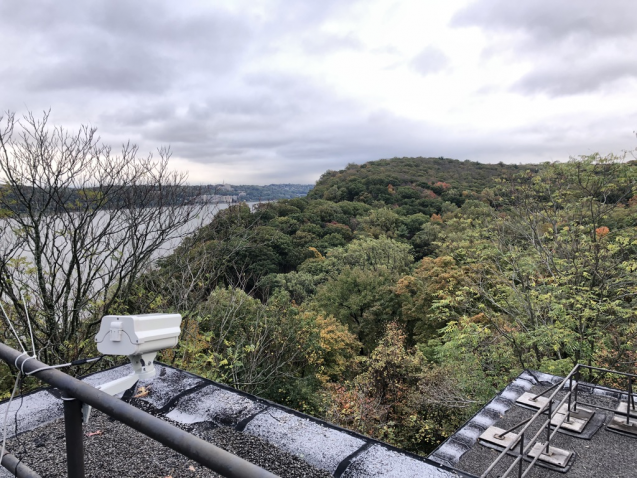
DIARY OF A TREE | Real-time forest monitoring, Hudson Valley | ONGOING
Biologist Kevin Griffin has assembled a network of advanced instruments in the New York suburbs to monitor physiological functions of trees, and transmit the data in real time to the lab. He has some 60 trees wired in the lower Hudson Valley and Long Island, revealing how they respond to daily weather shifts, which may suggest how they will respond to long-term changing climate. Griffin and colleagues also have a live rooftop webcam atop a building at suburban Lamont-Doherty Earth Observatory that images the area canopy every 15 minutes, aimed at assessing how seasonal rhythms of trees and vegetation respond to climate change. The webcam is viewable in real time. Article on the webcam |Camera livestream|Earth Institute article on the research |New Yorker article
CLIMATE JUSTICE | Coastal resilience studies with community groups, New York/New Jersey metro area | ONGOING
By 2050, sea levels around New York may rise by as much as two feet over 2000 levels; storm surges and flash flooding will almost certainly increase. These problems will especially affect low-income communities, often clustered in low-lying areas. Researchers will interview a wide range of people from potentially affected communities to make sure they are included in planning for solutions such as sea walls, street-level green spaces and wetland restoration. A project of the Center for Sustainable Urban Development. Leaders: environmental attorney and educator Paul Gallay and international development expert Jacqueline Klopp. Resilient Coastal Communities Project pages | Story on the project
RESURRECTED SPRINGS | Studies of 1800s spas, Northeast states | SUMMER 2023 OR 2024
Many commercial warm springs popular in the 19th century have been left to decay or been demolished; locations of some have been lost. Working with local historians, geologists Dallas Abbott and Bill Menke are searching out sites in New England and New York state to study subterranean conditions, and how they may be evolving. They will compare century-old temperature readings with new ones to judge whether possible subtle rises could indicate if climate change has affected underground waters.
PRESERVING NEW YORK’S WATER SUPPLY| Creating management plans for landowners|ONGOING
New York City collects and transports surface water from 2,000 square miles of land in three upstate watersheds—areas vulnerable to pollution, and now, climate change. The Agricultural Model Intercomparison and Improvement Project will help authorities come up with management practices to prevent polluting runoff in the face of changing precipitation and land-use patterns. The project is designed to both protect the water supply and support the viability of farming in the affected areas. Article on the project
WIDER UNITED STATES
CARBON-EATING ROCKS | Geologic mapping and sampling, Vermont, Minnesota, Washington, Oregon, California | SUMMER/FALL 2023/2024
Scattered through the United States, scientists have found unusual rocks thrust up from the deep earth that react rapidly with carbon dioxide—and with the right technology, might be harnessed to remove it from the air. Geologist Peter Kelemen and colleagues will visit sites to refine the maps and remove samples for laboratory testing by geochemist Christine McCarthy and others. Sites are clustered in and around coastal mountain ranges, with the greatest concentrations in California, Oregon and Washington, plus parts of Appalachia. Lab experiments on carbon sequestration | Related project in Oman| Geologists Map U.S. Rocks to Soak CO2 From Air
TSUNAMI RISK? | Ocean research off North Carolina | MAY 9-JUNE 10, 2023
Marine scientists have known for years about deposits left by past giant seafloor landslides down the continental slope off the Cape Hatteras region of North Carolina. If such a slide happened today, it could hit coastal communities with a tsunami, and wipe out seafloor infrastructure. But what causes these events, and how often and how recently they have occurred is a largely mystery. A team will deploy geophysical instruments and take sediment cores to better map the deposits, currently known to cover some 16,000 square kilometers, and determine their origins. The research vessel Marcus Langseth will return to shore briefly on June 3 to drop off/pick up crew members, then continue on. Co-chief scientists include Anne Bécel and Celine Grall. Marcus Langseth web pages
TRIASSIC TRIP | Geologic mapping, fossil hunting, Pennsylvania, Virginia | MAY 10-15, 2023 and ONGOING
The 200-million-year-old rocks spanning parts of southern Pennsylvania, Maryland and Virginia could yield key insights into natural planetary climate cycles and the evolution of dinosaurs, which arose around this time. Geologist Paul Olsen and colleagues are examining these rocks using remote sensing, paleomagnetism and old-fashioned foot travel. This spring, they will explore creek-bed exposures in Virginia just southwest of Washington. Later in the year they may continue to other locales. Planetary cycles’ effects on climate
EXPLOSIVE POTENTIAL | Using aerial geophysics to find land mines, Pawnee, Okla. | JUNE 12-16, 2023
The war in Ukraine is the latest iteration of a worldwide menace: Many countries are sown with more than 100 million land mines, grenades and other unexploded munitions, killing thousands every year, even long after conflicts are over. Detecting them with handheld instruments is slow and dangerous. Now, a team co-led by grad student Jasper Baur is testing ways to far more quickly and cheaply find them with drones. In March, to mimic real-world conditions, they buried about 150 real but disarmed devices of various kinds at a University of Oklahoma research facility. In June, they will return to test abilities of drones carrying magnetometers, ground-penetrating radar and thermal imaging devices to find them. Story on the project | Global Explosive Hazard Mitigation
SEA ICE AND HUMANS | Community-run microbial observatory, northwest Alaska | JUNE/SEPT 2023 AND ONGOING
Scientists working in Indigenous areas often fail to incorporate local knowledge. Biological oceanographer Ajit Subramaniam is changing this paradigm in the coastal Chukchi Sea community of Kotzebue, where warming has led to declines in sea ice and blooms of cyanobacteria that could harm ecosystems and human food supplies. Kotzebue citizens, who helped design the program, are sampling waters by boat and with autonomous underwater vehicles to better understand the changes. In June, Subramaniam will moor stationary instruments, and will retrieve them in September. Article on previous Kotzebue work
CHANGING TUNDRA |Arctic vegetation studies, northern Alaska |JULY-AUG 2023
The Toolik Lake research station, on Alaska’s North Slope, has been the site of continuous ecological research for more than 45 years, part of a worldwide network aimed at understanding long-term cycles and changes in nature. Principal investigator at Toolik is plant physiologist Kevin Griffin. He and ecologists Duncan Menge and Shahid Naeem are engaged in a range of work on the effects of climate change on plants and tundra biodiversity. Much other work is being done by researchers from other institutions. Toolik Station website
FROM SINK TO SOURCE | Measuring natural greenhouse-gas emissions, northern Alaska | AUG-SEPT 2023
The Arctic stores vast amounts of carbon in soil and permafrost—twice as much as in the atmosphere. But with rapid thawing of the ground, microorganisms appear to be releasing stored CO2 and methane back to the air. Luke Schiferl and Sarah Ludwig are measuring the flux on Alaska’s North Slope on the ground, and via instruments on a low-flying aircraft. Flights depart from Deadhorse, Alaska. The planned result is an improved map of what is happening at the atmospheric interfaces of tundra, wetlands and small ponds. Project web page
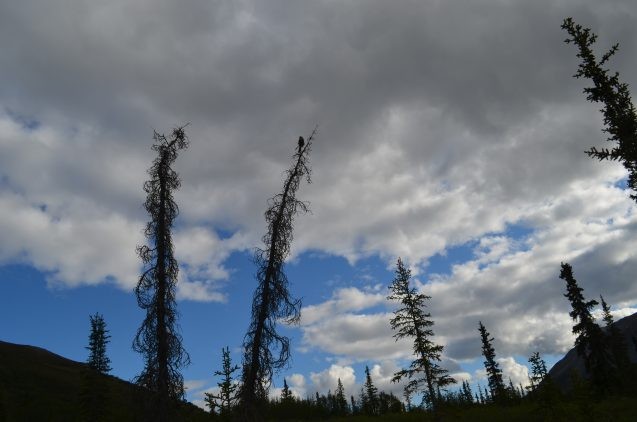
SOUNDS OF A CHANGING ARCTIC | Bioacoustic/camera wildlife studies, Alaska/Yukon | SUMMERS THRU 2024
Many of Alaska’s wild tundra areas face future fossil fuel development. Ecologist Natalie Boelman and colleagues are assessing potential effects on wildlife, from caribou to birds. Using sensitive microphones and camera traps at 90 locations, they are comparing three areas: Alaska’s heavily industrialized Prudhoe Bay; the Arctic Wildlife Refuge; and Canada’s protected Ivvavik National Park. Sensors pick up everything from bird calls to mosquitoes buzzing, along with human noise. Artificial intelligence will combine the sounds with camera images to analyze the abundance and activities of animals, and their reactions to disturbance. Boelman hopes to recruit volunteers to help count animals in the camera images.
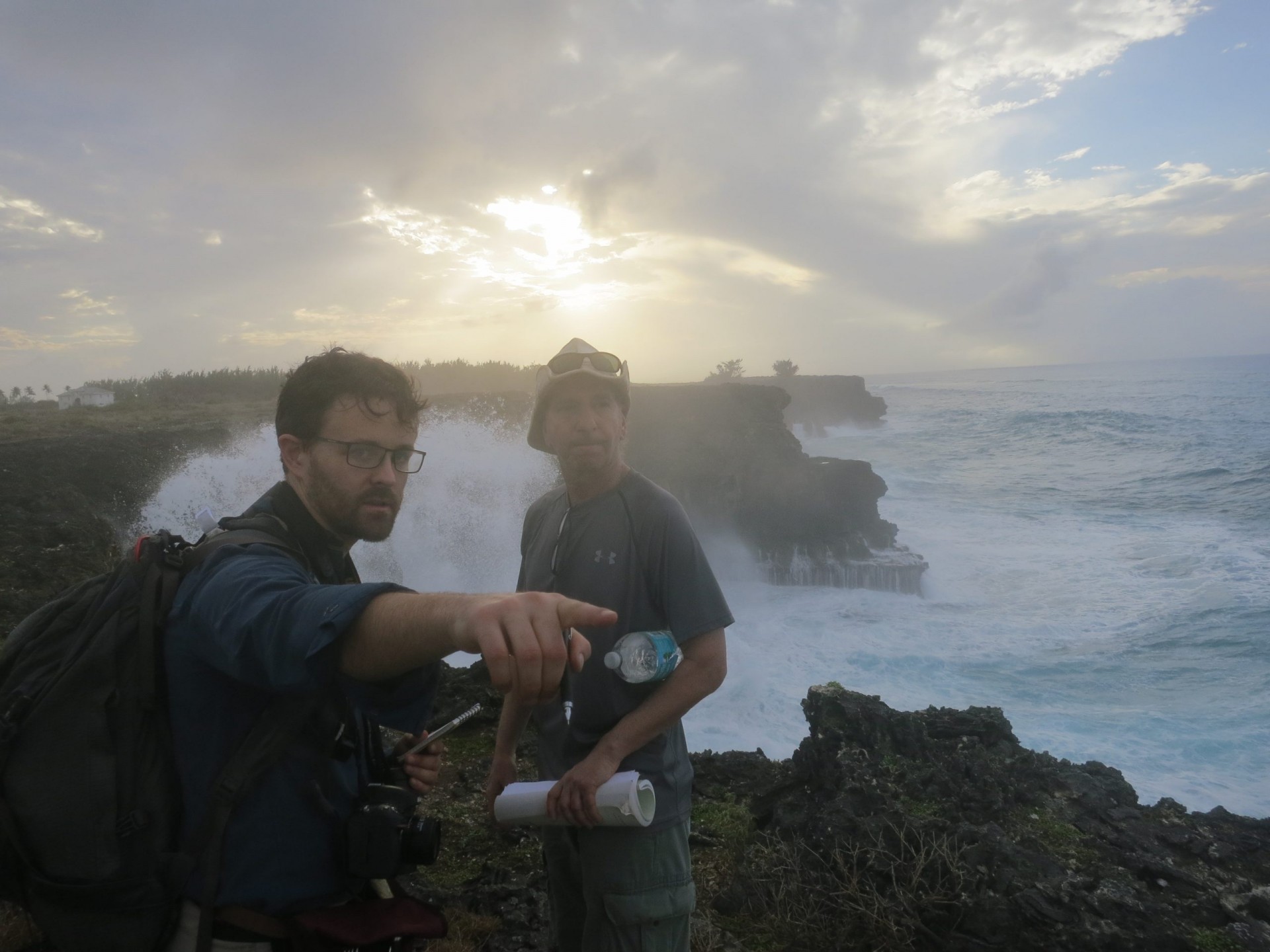
ISLAND INDICATORS | Gauging past sea levels, Hawaiian islands | June 3-18, 2023
To improve forecasts of future sea level rise, scientists are turning to coastlines that have preserved geologic markers of sea levels in past times when the planet warmed rapidly, similar to today. Continuing a longtime global project, a team will travel to O’ahu, Molokai, Kauai and Lanai to examine fossil coral reefs, dunes and other deposits that can signify past levels. Focus is on a period about 120,000 years ago, when temperatures were similar to those projected for this century, and seas are thought to have risen precipitously. Team members include geodynamicist Jacqueline Austermann, paleoclimatologist William D’Andrea and geologist Maureen Raymo, director of Lamont-Doherty Earth Observatory. Story on related research in Barbados
ANCIENT SEAS VS. MODERN | Collection, culture of plankton, Santa Catalina Island, Calif. | JUNE 29-AUG 5, 2023
Oceanographer Bärbel Hönisch has shown that fast-increasing CO2 in the oceans is causing rapid changes with little past precedent. Her knowledge of the past is based on comparisons between shell-building plankton recovered from ancient sediments and their modern cousins—but there are some uncertainties. To better reconcile records, Hönisch and colleagues conduct scuba dives and net drags to collect modern plankton. To duplicate ancient seawater qualities, they culture the plankton under varying chemical and temperature conditions at a lab on the island, and study the effects. Humans Are Outpacing Ancient Volcanoes as a Carbon Source | Modern Ocean Acidification Is Exceeding Ancient Upheaval
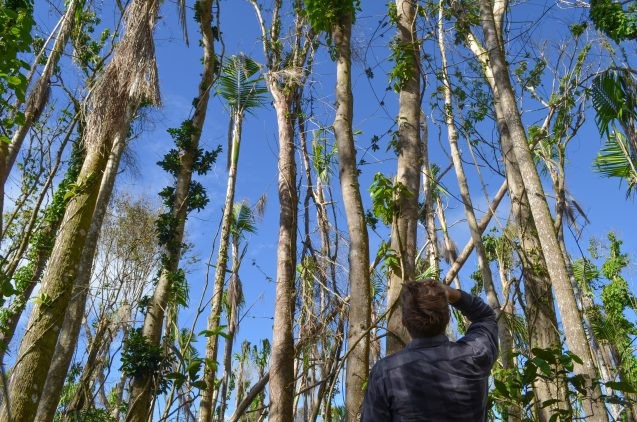
TROPICAL TREES, STORMS AND CLIMATE | Forest surveys, Puerto Rico | ONGOING
Beyond destroying infrastructure and killing people, Hurricane Maria killed or severely damaged a quarter of Puerto Rico’s big trees. Forest ecologist Maria Uriarte and colleagues are working throughout the island to assess the outlook for forests. In the long term, they aim to project how global warming and resulting more intense storms could affect the makeup of forests across the tropics and subtropics. Much of the work focuses on Luquillo Experimental Forest, near San Juan, where the researchers have been studying the same plots for decades. Story, video, slideshow on Uriarte’s work
UNDERGROUND POISON | Cleansing wells in tribal lands, North and South Dakota | APRIL-OCT 2023 and 2024
U.S. tribal lands in the Dakotas contain more than 15,000 hazardous waste sites and 7,000 abandoned mines, which send dangerous levels of arsenic and uranium into the drinking of water of a third of the population. This is likely linked to high levels of cardiovascular disease and diabetes. In collaboration with the Oglala Sioux, Cheyenne River Sioux and Spirit Lake Tribes, a five-year Superfund project is investigating contaminants’ pathway, health effects, and ways to mitigate hazards. Led by Ana Navas-Acien of the Mailman School of Public Health, with investigators including Benjamin Bostick and Steven Chillrud. This year’s research will include collection of surface waters, groundwater and soils on or near tribal lands. The project will also test new technologies to detect and remove contaminants using solar energy and photosynthetic bacteria. Arsenic taints many U.S. wells
ANCIENT ROCKS, MODERN PURPOSE | Geology and groundwater studies, Navajo Nation and southwest Utah | SUMMER/FALL 2023
An interdisciplinary team will carry out a rare combination of research into ancient rocks and modern pollution as it plans to drill cores from the 200-million-year-old Chinle formation. These spectacularly colored desert rocks formed at the juncture of the Triassic and Jurassic periods, when mass extinctions swept the earth and dinosaurs began to rise. The cores should help scientists understand how climate changes may have contributed. At the same time, modern groundwater contamination from extraction of uranium, metals, oil, gas and coal is affecting these formations. Boreholes should provide information on how contaminants move around. This year’s trip will involve mainly reconnaissance. A separate group will conduct workshops for the community Project co-led by geologist Paul Olsen in collaboration with Navajo Technical University. Petrified National Park drilling
WOOD UNDERWATER | Sampling of subfossil trees, Utah, New Mexico | AUG and SEPT 2023
The U.S. Southwest is undergoing a megadrought more intense than anything seen for at least the last 1,200 years, driven largely by warming climate. Tree-ring scientists have studied other droughts over this span, but are unsure if they, too, were caused by heat. New analysis techniques promise to answer the temperature question, but there are few suitable living trees old enough from which to extract this kind of data. Dendrochronologists Karen Heeter and Edward Cook aim to extend the record by sampling dead but well-preserved logs on the ground or underwater at two high-elevation lakes. Blue Lake (in August) lies at 10,000 feet in the Tushar Mountains of south-central Utah; San Leonardo Lake (September) at 11,300 feet in northern New Mexico. The research is part of a larger project to develop a history of temperatures throughout North America. Southwest megadrought worst in 1,200 years | 1,000 years of tree rings confirm extremity of 2021 heat wave
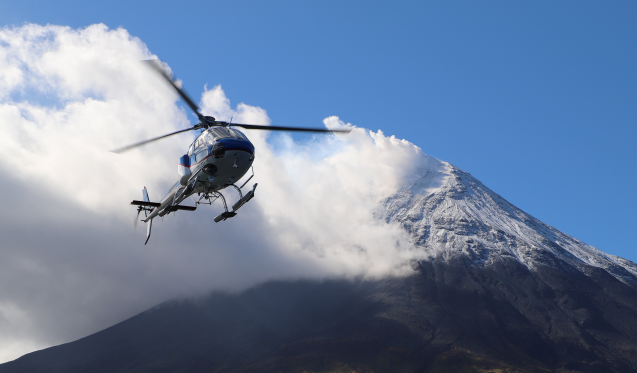
WARNING SIGNS | Volcano monitoring, Aleutian Islands | MAY 29-JUNE 10, 2023, REVISITS THRU 2025 | Costa Rica |NOVEMBER 2023/MARCH 2024
Some 80 active volcanoes worldwide threaten 800 million people. But dependable eruption forecasts largely elude scientists, partly because many volcanoes are in underdeveloped areas, not monitored with technology available to rich nations. To remedy this, volcanologists Terry Plank, Einat Lev and colleagues are working to create a standardized package of instruments and protocols that can be duplicated quickly and cheaply at sites across the world. A pilot project is on the Aleutian Islands’ highly active Cleveland and Okmok volcanoes, where they have deployed sensors to detect gas emissions, earthquakes, surface inflation, and low-frequency sounds signaling danger. Data is transmitted continuously via satellite. The team will next install a similar array at Costa Rica’s active Poas Volcano, in conjunction with the nation’s Volcanology and Seismology Observatory (OVSICORI). The partners will also hold a community workshop on the volcano in spring 2024. OVSICORI website | Project web page
RESETTING THE HUMAN CLOCK | Fieldwork to date early stone tools, southern California | MID NOVEMBER 2023
Evidence is mounting that humans settled the Americas well before the longtime conventional date of about 13,000 years ago—maybe as long ago as 33,000 years. Geochemists Sidney Hemming and Tanzhuo Liu believe they may be on the trail to an even earlier date: some 45,000 years. This is based on analysis of a single stone tool about the size of a child’s palm, found in California’s Anza-Borrego Desert State Park. There are abundant stone artifacts in this arid area, largely paved with barren expanses of clay and gravel. The scientists study so-called rock varnish, which forms on stony surfaces over thousands of years, and can be used to date surfaces including both worked tools and natural stone. Working with archaeologists, they will collect material from archaeological sites to aid efforts to date more artifacts.
Anza-Borrego Park description
BETTER SEPTIC | Innovative wastewater systems, Alabama | ONGOING
In central Alabama, where the population is largely Black, poverty is rampant, and soils too dense to absorb sewage, municipal sewage systems are few and far between. Some 90 percent of private ones function poorly, or are just a pipe to a nearby ditch or stream. In at least one county, which has been sued by the U.S. Justice Department for discriminating against Black residents for failing to provide wastewater infrastructure, a full third of residents suffer from sewage-related parasitic hookworm. To help remedy the problem, teams are building 15 modular small-scale wastewater systems, each serving about 20 households or businesses, similar to ones used by the military but so far rarely elsewhere. If this pilot is successful, such systems could be built to serve many other areas. . Upmanu Lall, director of the Columbia Water Center, co-leads the project. Alabama Violated Rights in Sewage Case | Project web pages
CO2-Eating Rocks |Carbon sequestration, central Minnesota | ONGOING
The Lenfest Center for Sustainable Energy is working to both improve the yield of nickel ore and pump atmospheric carbon underground, where natural chemical reactions will lock it into solid mineral form. At a planned mine in Tamarack, Minn., a rare formation of porous ultramafic rocks will naturally power the reactions. The project employs technology developed by scientists in Oman, where similar rocks exist. Project announcement | Previous work in Oman
INTERNATIONAL
RIFTING CONTINENT | Geological fieldwork to map fault zones, Okavango Basin, Botswana | May 2023
Using a wide variety of methods, geologist Folarin Kolawole is mapping poorly known seismic faults generated by the slow rifting of East Africa. The research is aimed at understanding earthquake risk over wide areas. In May he and local colleagues will visit the Okavango-Makgadikgadi Rift Zone in northern Botswana, where young faults break the desert surface, often causing sizable earthquakes. They will map fault structures and sample rocks to determine the timing and structural styles of faulting across the region.
CONSERVING COASTLINE | Work with Indigenous peoples, New Ireland, Papua New Guinea | MAY 11-JULY 15, 2023
The Indigenous people of Papua New Guinea face multiple challenges from development, including along the coasts, where the world’s first deep-sea mining is planned. Anthropologist Paige West and longtime Indigenous collaborator John Aini will conduct an ongoing project on conserving marine sovereignty. This summer they focus on mentoring young women from New Ireland working on coastal resilience and erosion. This includes a new project examining the role of Indigenous-designed fish traps in mitigating coastal erosion on low-lying islands—part of a collaboration with 12 Indigenous communities on small-scale conservation areas that work to revitalize both marine diversity and cultural practice. Article on the project
BEDROCK CLUES | Coring rock under Greenland ice | MAY 3-JUNE 3, 2023 and SUMMERS THRU 2026
In 2016, scientists announced that a rare sample of rock from deep under the Greenland ice indicated the sheet had melted to bedrock at least once in the recent geologic past—a shock, suggesting it could happen with human-induced climate change. However, the evidence came from just a single core, taken in the 1990s. Now a team led in part by Joerg Schaefer, author of the original report, is following up to gather more evidence by drilling through the ice to bedrock at four other sites. Also on the project: Nicolás Young and Gisela Winckler. This year, the team will drill at Prudhoe Land, in the northeast of the ice sheet. Project web pages | Story on the project | Greenland ice melted to bedrock in the past
DISAPPEARING WATER|Studies of glacial lake drainage, western Greenland | May and August 2023
Each summer, meltwater lakes form atop parts of the Greenland ice—and many suddenly drain when their bottoms fall out. Little is known about what triggers this, where the water goes, and how it might influence ice movement. To address these questions, a team will helicopter in east of the coastal town of Ilulissat to place geophysical instruments in and around where lakes typically form. These will include GPS units to measure minute movements of the ice, radars to detect water pathways underneath, and water-depth recorders for the lakes themselves. Team includes seismologist Meredith Nettles and glaciologist Jonathan Kingslake. Article on meltwater within the ice
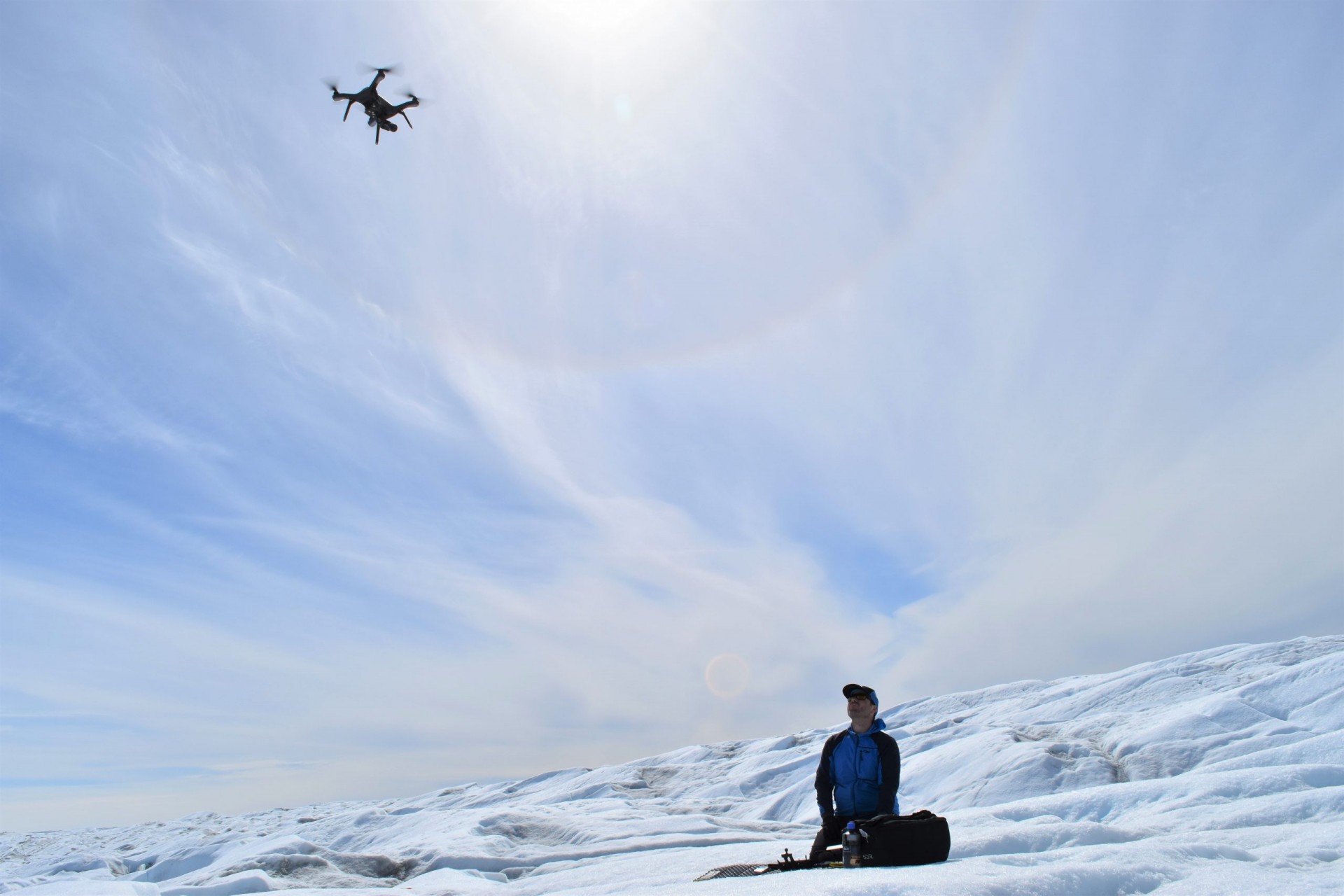
DEEP-FREEZE DRONES | Studies of glacial ice, western Greenland| July 9-20, 2023
Glaciologist Marco Tedesco and a grad student will fly to Kangerlussuaq, western Greenland, and from there travel overland to the Russell glacier, to study impurities in the ice, and their effects on surface melting. The researchers will collect data via drone over small areas, to assist satellites using artificial intelligence to analyze much wider ones. Their particular focus will be cryoconites—small, mysterious holes that collect dust, microorganisms and meltwater, and appear to play a big role in rapid summer melting. They will also collect ice samples to test for microplastics. The Russell lies at the end of Greenland’s longest road, one of the few glaciers reachable by vehicle. Story, film and slideshow on the project
LAND’S END | Lake coring, archaeology, northern Greenland |SUMMER 2023
Peary Land, an uninhabited peninsula in far northern Greenland, was once an oasis, if a harsh one, for early Arctic people; its dry climate keeps glaciers from building, making it the world’s northernmost ice-free region. Little is known of how people survived here as far back as 2500 BC, or why they eventually left. Paleoclimate scientist William D’Andrea will join a team of archaeologists and others studying the once-occupied Wandel Dal valley. By coring lake sediments, they hope to retrieve leaf remains, pollen, ancient DNA and other material to outline past temperatures, precipitation, and plant and animal life. Wandel Dal project website | D’Andrea’s work in Arctic Norway
ANCESTRAL LAND | Studies of ancient climate, tectonics and life, northwest Kenya | JUNE 15-30, 2023
Paleoclimatologist Kevin Uno and other scientists are part of the large-scale Turkana Miocene Project, which is studying many aspects of landscape and biological evolution, from 23 million to 5 million years ago, when early prehuman ancestors roamed the landscape. The team, involving researchers from a dozen institutions, will excavate four to six fossil-rich sites this summer. Project website | Human origins in the Turkana region
END OF AN ICE SHEET? | Glacial geology, Baffin Island | SUMMER 2023
The Barnes Ice Cap, located on Canada’s Arctic Baffin Island, is one of the last remnants of the Laurentide Ice Sheet, which once covered North America as far south as New York and New Jersey. Due to warming climate, it is now receding; models suggest it could disappear by 2200. But are current conditions unprecedented? Geologists and geochemists including Nicolás Young, Joerg Schafer and Gisela Winckler will collect samples from bedrock that has emerged from under the ice in the last decade. They will later measure rare cosmogenic nuclides that will indicate whether the ice pulled back to a similar extent at some point or points after the last ice age. Abstract of the project
POLLUTED TREASURE | Encouraging mercury-free gold mining, Peruvian Amazon | SUMMER 2023
The Madre de Dios river basin of southeast Peru is heavily pocked by small-scale illegal mines, where miners commonly use polluting mercury to extract gold. A team including grad student Jennifer Angel Amaya and geochemist Alexander van Geen are part of a project to induce miners to separate out the gold using purely mechanical means. Using portable instruments, they will be able to ascertain if any mercury was used. If not, through arrangement with the government, the gold can be sold at a premium. Story on the project
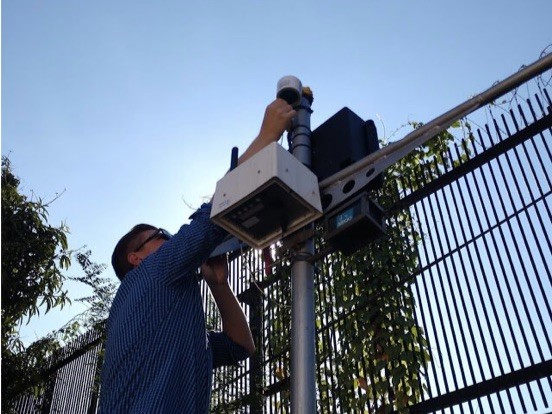
AFRICAN SMOG | Air pollution monitoring, sub-Saharan Africa | JUNE-AUG 2023 AND ONGOING
Much of sub-Saharan Africa suffers from drastic air pollution, killing as many as 700,000 people a year. Most countries do not have the means to even measure pollution, much less address it. Atmospheric scientist Dan Westervelt and colleagues have designed low-cost monitors and are now helping governments set up networks to chart pollution from cooking fires, garbage burning, vehicles and generators. In late June and early July they will be in Togo to install monitors at 20 sites throughout the country. They will continue on to Ghana to help build and test the first Ghanaian-sourced air sensors. In August, they will be in Nairobi and Mombasa, Kenya, to help maintain existing monitors. Other countries where they work: Benin, Rwanda and the Democratic Republic of Congo. Air Pollution in the Global South | Measuring pollution in Togo | Bridging the Pollution Data Gap in Sub-Saharan Africa
GETTING THERE | Studies of private shared urban transport, Africa, Latin America, Asia | FALL 2023 and ONGOING
In the cities of the Global South, rickshaws, minibuses and other privately owned vehicles are the predominant form of transport—and in fact may carry more people daily than any other mode in the world, period. But these so-called forms of informal mobility are rarely regulated or planned in any systematic way, exacerbating chronic air pollution, traffic congestion and other problems. A new global consortium of researchers project will collect sophisticated data on informal mobility in eight cities, with the eventual goal of helping governments improve transport access, working conditions and public health. Research in Accra, Bangkok, Beijing, Bogotá, Cape Town, Kumasi, Mumbai and San José. Led by Jacqueline Klopp of the Center for Sustainable Urban Development. Project announcement | A ‘digital commons’ to track African urban transport
THE RIGHT ROCKS | Studies of basalt formations for carbon sequestration, Kenya | AUGUST 2023 and SPRING 2024
Kenya is a world leader in renewable power, getting 92 percent of its energy from such sources, including geothermal plants. Powered by this energy, it also has the potential to be a world leader in carbon sequestration, because it is rich in basaltic rocks, which naturally host chemical reactions that turn atmospheric carbon into a solid mineral that can be stored underground. The process has already been successfully harnessed in Iceland, and Kenya is arguably the next best place on earth to further this technology. However, relevant studies on African rocks are almost nonexistent. A group led by geophysicist David Goldberg, with Lydia Olaka of the Technical University of Kenya, will sample rocks and subsurface waters to study their chemistry and gauge the potential here. How basalt turns CO2 to stone
PLUNGING CANYONS | Geologic fieldwork, South Australia | EARLY JUNE-EARLY AUGUST 2023
The period 650 million to 535 million years ago was marked by the evolution of the first complex organisms, along with violent climate swings from hothouse conditions to ice ages that glaciated most or all of the planet. Geologists Nicholas Christie-Blick and Sarah Giles are sampling rocks from this period, called the Ediacaran, in the deep canyons of the Flinders Ranges of South Australia. This year, they will be looking for fossil evidence of microbial mats at the time when complex animal life first appeared, along with signs of pulsed deglaciations. Area is remote, and fieldwork will entail extensive hiking.
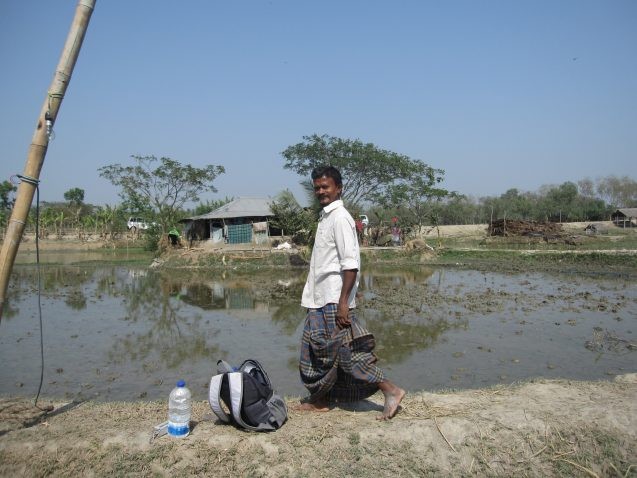
SINKING AND SHAKING | Studies of Bangladesh land subsidence, earthquakes| ONGOING
Across much of low-lying Bangladesh, sea levels are rising, and land is sinking. This is bringing flooding and pollution of fresh water aquifers. On top of this, it has recently become clear that the region faces substantial risk of catastrophic earthquakes that could change the course of rivers. Geophysicist Michael Steckler and colleagues are studying the forces at work with precise measurements of underlying geology and changing land levels, especially near the coast. The studies are aimed in part at design and maintenance of the many dikes that keep the sea at bay. Steckler makes frequent trips, including to the wild Sundarbans, home of the world’s largest remaining mangrove forest. Bangladesh earthquake risk | Watch a documentary | Project blog
LIFE ON MARS? | Sampling Icelandic Lava Tubes | September 2023
Lava tubes—sizable caves formed in cooled volcanic material—are found in various places on Earth, and are also known on Mars. Could they harbor life on the Red Planet, as they do here? As possible analogs to Mars, six lava tubes in Iceland will be sampled for biochemical and geological characterization by graduate student Joleen Csuka, alongside researchers from Iceland’s University of Akureyri and the Netherlands’ Utrecht University for an interdisciplinary study of these subterranean environments.
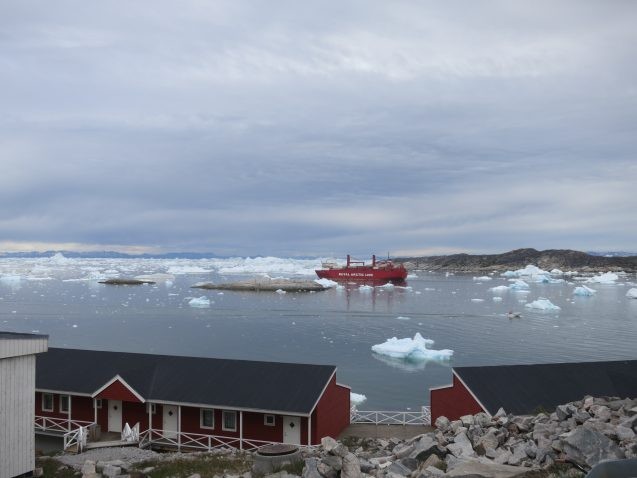
NAVIGATING THE NEW ARCTIC | Mapping Greenland’s changing coastal waters | NOVEMBER 2023 and ONGOING
Sea levels in most of the world are rising, but in Greenland they are actually dropping, partly because Greenland is losing so much ice, the land is quickly rebounding from its weight. This threatens to strand coastal communities that often depend on already shallow waters for travel and fishing. With local people doing much of the legwork, a group led by polar scientists David Porter, Robin Bell and Kirsty Tinto are working to map waters around four communities in detail, and install instruments to understand how things are changing, and how communities may adapt. Work taking place in Kullorsuaq, Aasiaat, Tasilaq, and Nuuk. The American scientists will visit November 8-10, during Greenland Science Week. Project web pages | Story on the project | Story, video, slideshow on the melting of Greenland
1,000 YEARS OF WEATHER | Tree-ring sampling, Peru, Bolivia, Ecuador | SUMMER 2023
As part of a five-year project to reconstruct weather patterns and extremes over the past millennium, scientists led by Laia Andreu-Hayles will sample rings from ancient trees in Peru, Bolivia and possibly Ecuador. Work extends from 15,000 feet in the Andes into lower elevations of the western Amazon. The team will merge the data with separate studies of cave formations and other material to yield a long-term picture of climate variations in this region. Abstract of the research
MILLENNIA OF CLIMATE ADAPTATION | Ethnographic, archaeological investigations, southwest Madagascar | JUNE-AUGUST 2023 and ONGOING
A team of researchers co-led by Kristina Douglass is using archaeological, ethnographic and ecological data to investigate how people have adapted their livelihoods in farming, fishing, foraging and herding to big natural climate swings over the last 3,000 to 5,000 years. Human-influenced climate change presents a new threat; among the organisms menaced are Madagascar’s iconic baobab trees, a keystone species. Co-led by the Indigenous people, the study has an eye toward how the Malagasy people and others can adapt in the future. Spinoff projects include investigations of the early settlement of Madagascar, past megafauna extinctions, and the effects of coral harvesting. Project website
MONSOON MYSTERIES|Ocean-going studies, Bay of Bengal/Arabian Sea | April-Aug. 2023-2025
A third of the world population depends on seasonal monsoon rainfall, governed largely by sea-surface temperatures and currents in the Indian Ocean. In recent decades, the ocean has undergone pronounced warming, which may be changing longtime patterns. In an attempt to understand the dynamics of two distinctly different key areas—the Bay of Bengal and the Arabian Sea—research ships from India and the United States will carry out a series of cruises to better understand cyclic changes. Research will combine remote sensing with shipboard measurement and deployment of autonomous underwater gliders. Oceanographer Joaquim Goes will be one of the key participants.
OCEAN INVADERS| Studies of harmful plankton off Oman | TBD
It’s part plant, part animal, and it’s taking over. It’s Noctiluca scintillans, a floating organism that forms thick, slimy mats on the ocean, feeding on everything from sunlight to fish eggs. It is thriving in the Arabian Sea, where climate change has created the right conditions, damaging fishing and aquaculture, clogging water intakes of oil refineries and desalination plants, and hurting tourism. Oceanographer Joaquim Goes is leading a study of the organism and how to deal with it, working at sea to understand its life cycle, and how Oman can adapt. The creatures are now spreading off southeast Asia and India, and may eventually reach other areas. Studying Bioluminescent Blooms in the Arabian Sea
DEEP CIRCULATION | Ocean-bed drilling, North Atlantic, off Iceland | June 12-Aug 12, 2023
The drill ship JOIDES Resolution will take cores of sediment and underlying basalt seabed from several sites south of Iceland in order to understand how underlying volcanic activity and resulting changes in seabed topography may shape the deep circulation of North Atlantic waters over long periods. Sediments are also expected to yield insights into past natural climate swings. Crew will including Sidney Hemming and Claire Jasper. Part of the International Ocean Discovery Program. IODP Expedition 395 web pages
END OF AN ERA | Seabed studies of last ice-age deglaciation off northwest Greenland | JULY-AUG 2023
A 35-day cruise in Baffin Bay, between Greenland and neighboring Baffin Island, will seek to elucidate what initiated rapid deglaciation along Greenland’s coast at the end of the last ice age. It is thought that the island was ringed with extensive floating ice shelves at the time, like those now surrounding Antarctica. Warming ocean temperatures may have destabilized them, similar to what is now taking place in Antarctica. To test this hypothesis, the researchers will map the seafloor and bring up cores of sediments containing glacial debris and tiny creatures that will allow them to reconstruct conditions of this time. Co-chief scientist: Brendan Reilly, director of the Lamont-Doherty Deep Sea Core Repository.
ICE CYCLES | Deep drilling off Northwest Greenland | AUG 12-OCT 13, 2023
The research vessel JOIDES Resolution will carry out deep drilling of sediments in the seabed off northwest Greenland. This should outline repeated warm and cold periods over the last 30 million years, and multiple factors that may have caused them, including oceanic, atmospheric and tectonic forces, and variations in Earth’s orbit. Drilling at seven sites will penetrate as far as 1,000 meters. The expedition seeks to address knowledge gaps about the variability of the Greenland Ice Sheet. Crew will include deep-sea core specialist Jannik Martens. Part of the International Ocean Discovery Program. IOPD Expedition 400 web pages
EMPTYING THE LAND | Studies of protected areas, Japan | ONGOING 2021-2024
In Japan, populations in many rural areas are aging and declining, presenting the reverse of issues seen in most countries seeking to preserve natural areas. Joshua D. Fisher, who co-directs the Advanced Consortium on Cooperation, Conflict and Complexity, will visit rural regions to investigate how well different systems of governance are working in protected areas. Part of a wider international project based at Hiroshima University to maximize the effects of managing protected areas. Project web pages
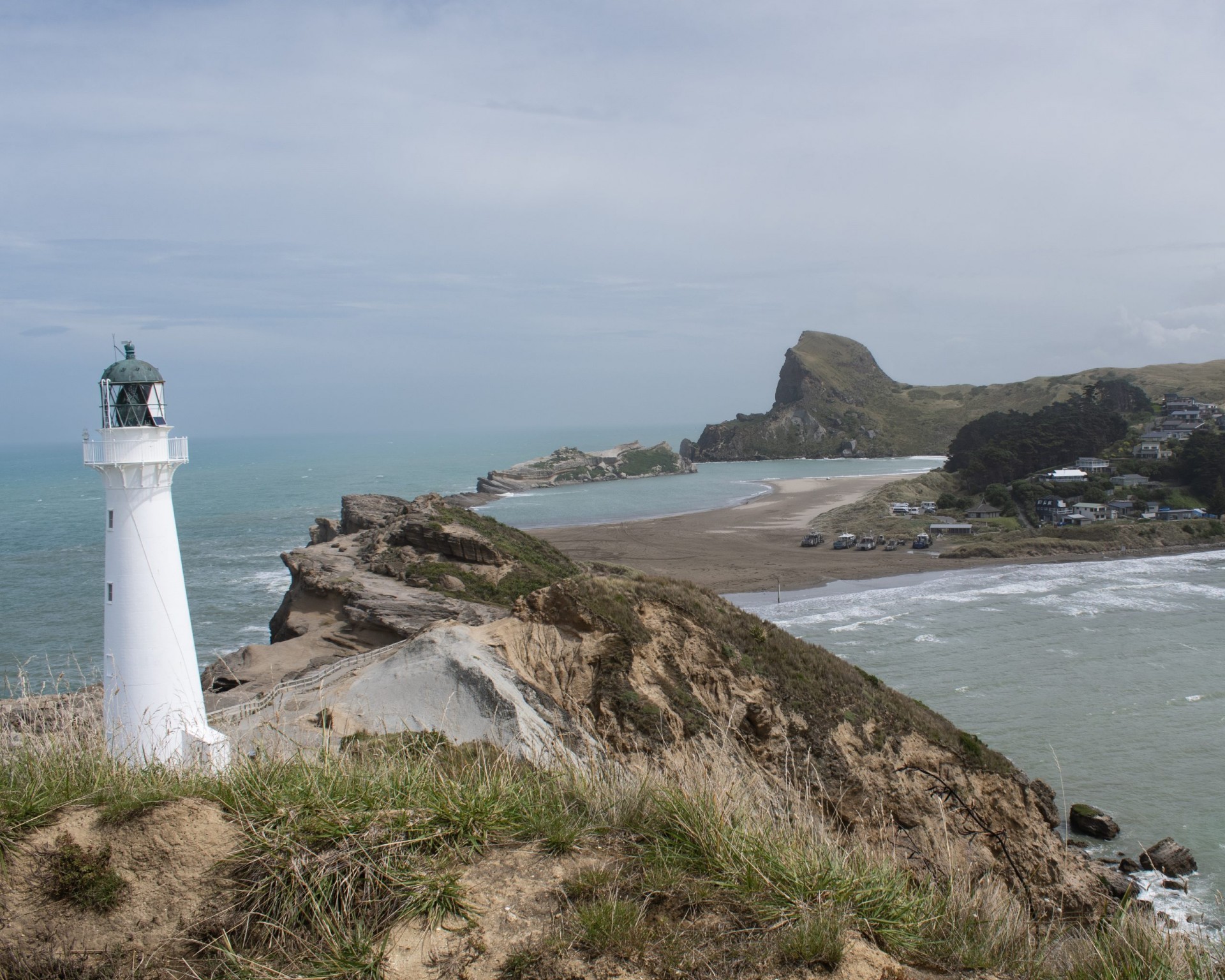
UNCERTAIN THREATS | Studies of earthquake faults, New Zealand | LATE 2023
Much of New Zealand’s landscape is dominated by visible earthquake faults, but little is known about long-term dangers, because it is hard to tell when they last moved. To address this, geologist Stephen Cox and and colleagues will collect samples from major faults in the sparsely populated Wairarapa region of the South Island. Most work will be along the coast, where faults are visibly exposed at low tide. Samples will be analyzed using newly developed chemical methods that allow scientists to detect and date earthquakes that occurred tens of thousands to millions of years ago. ‘Quiet’ Part of San Andreas May Be Threat | How Earthquakes Leave Chemical Clues in Rocks
GLACIERS AND GEYSERS | Studies of hydrothermal eruptions and glacier retreat, Chilean Andes | OCTOBER 2023
Mountain glaciers around the world are rapidly retreating—some of them located in areas of active volcanism. What happens to underlying volcanism and hydrothermal systems when the ice disappears? A team including geologist Michael Kaplan and geochemists Joerg Schaefer and Gisela Winckler will work to understand processes at El Tatio geyser field in the northern Chilean Andes, where glaciers retreated thousands of years ago, and hydrothermal activity has since been intense. Precise dating of mineral deposits built up around the geysers and underlying glacial debris should help the researchers understand the links between current deglaciation and hydrothermal eruptions, and address potential for new volcanic hazards. Chasing Gold, Geysers and Geothermal Power
WANING GLACIERS | Citizen surveys, Peru | FALL 2023 or SPRING 2024
Anthropologist Benjamin Orlove of the International Research Institute for Climate and Society is studying how people are affected by and adapting to declines of nearby glaciers. In Peru’s Cordillera Blanca, his research focuses on changes in water availability, increases in natural hazards, and alteration of culturally and economically significant landscapes. Here, residents are trying to cope with reduced water for irrigation and domestic use. Past work has taken him to small towns in Washington state and in the Italian Alps.
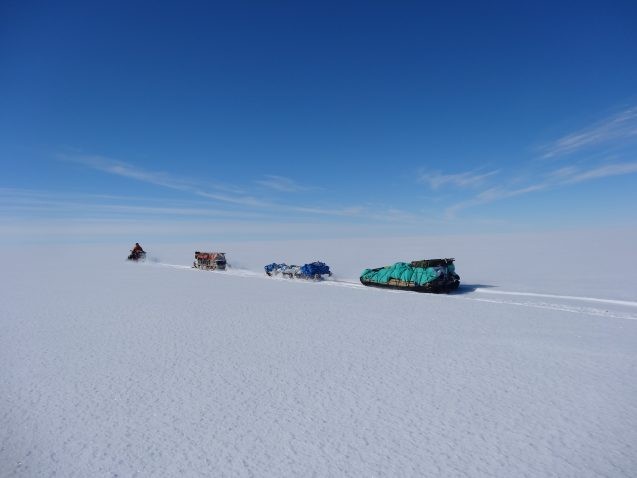
SLIDING INTO THE SEA | Geophysical measurements, Thwaites Glacier, Antarctica | DEC 2023-JAN 2024
West Antarctica’s Thwaites Glacier is wasting at a quickening pace, already contributing 4 percent of current global sea-level rise. In one of the biggest international Antarctic collaborations ever, some 100 scientists from seven countries are studying every aspect of the glacier and its bed. Among them, geophysics grad student Elizabeth Case will camp on the ice with colleagues to collect data on strains and deformation building up inside the ice as it flows to the sea. Story on the project | Project web page
RESCUING SLAG AND CO2 | Steelworks recycling, northern China | ONGOING
Researchers from the Lenfest Center for Sustainable Energy are working with Baotou Steel in Inner Mongolia to run a revolutionary new plant designed to recycle slag and waste CO2 into raw materials used in paper, plastic, paint, cement, and the oil and gas industries. After a successful pilot, construction is underway on a commercial-scale plant. Project led by Lenfest director Ah-Hyung (Alissa) Park. Article on the project
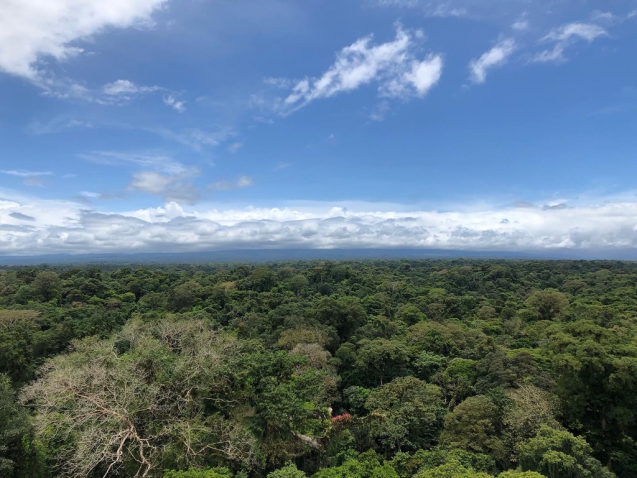
NEW GROWTH | Monitoring tree responses to drought, Costa Rica, Sweden, Florida, Mexico | ONGOING THRU 2024
Many forests across the world are projected to see expanded periods of high heat and drought as the climate warms; in some areas, including parts of Russia and Mongolia, the most common tree species may reach the limits of their endurance, with cascading ecological effects. Ecoclimatologist Mukund Palat Rao is studying potential effects in various places by installing dendrometers, sensitive instruments that record how individual trees respond to changing conditions hour by hour. He has installed instruments at Costa Rica’s La Selva Biological Station; at Svartberget, Sweden; in northern Florida; and Sonora, Mexico. He goes back periodically to maintain them and download data. Colleagues are monitoring sites in Alaska, Saskatchewan, Belgium and Denmark.
CATALYZING ENERGY | Mapping potential electric investment, Uganda | ONGOING THRU 2024
Efforts to improve energy access in the developing world frequently focus on homes, schools and health facilities. This project focuses on agricultural lands where investors in electricity infrastructure could make money by expanding power grids. Guided in part by satellite imagery, researchers in Uganda are interviewing people and gathering visual data on crops, livestock, wells, irrigation systems, and agricultural processing and storage systems. Co-led by engineer Vijay Modi. Project web page
CLEARER AIR | Moving households to cleaner fuels, central Ghana | ONGOING OCT 2023-MAY 2028
Some 3 billion people cook with wood and other biomass on rudimentary stoves, producing a fifth of the world’s black-carbon emissions, and substantial adverse health effects. In a central Ghana region with 30,000 people, researchers are exploring ways to transition people in farming communities to new cookware and cleaner fuels, including propane. Surveys of existing air quality are the first step. Staff includes geochemist Steven Chillrud, who measures human exposure to dirty air. Project web page
DANGEROUS WATERS | Testing waters, soil and rice for arsenic, Southeast Asia| ONGOING
Naturally occurring arsenic in groundwater is a major problem in wells across much of Asia. Geochemists Alexander van Geen and Ben Bostick are studying the causes and possible mitigation measures, working across India and Southeast Asia. In May, van Geen and collaborators will sample sediments from the Ravi River, which runs through eastern Pakistan and northwestern India, an apparent source of high arsenic concentrations. This summer/fall, Bostick will work in Cambodia and Vietnam to investigate how rice crops take up arsenic from soil and irrigation water—a widespread problem. Videos and story on Asian geological and health studies | Arsenic pollution near Hanoi
ON THE MOVE | Studies of climate-driven migration, The Gambia | DEC 2023
Geographer Alex de Sherbinin and political scientist Fabien Cottier of the Center for International Earth Science Information Network will visit this West African nation to investigate the factors that drive people to migrate within their own country, or internationally. In the capital of Banjul, they will interview people who have moved from the countryside, as well as talk to relative and friends in rural areas. They will also interview people contemplating moves to Europe or North America to understand their motivations and the benefits they anticipate. Factors behind climate migration
EXPOSED INNARDS | Seabed drilling, Tyrrhenian Sea | FEB 9-APRIL 8, 2024
The bed of the Tyrrhenian Sea, off southwestern Italy, is home to a geologic anomaly: intact rocks that once resided in the earth’s mantle, normally not seen in ocean crust, defying the conventional explanation for how it forms. A team on the research ship JOIDES Resolution will drill down with the hope of gaining some explanation of how they came to be there. Co-chief scientist is Alberto Malinverno. Part of the International Ocean Discovery Program. IODP Expedition 402 webpage
SUSTAINING PEACE | Sociological fieldwork, Costa Rica | TBD
While most research frames peace within the context of conflict and war, social psychologist Peter Coleman and colleagues from the Advanced Consortium on Conflict, Cooperation and Complexity are studying the factors that contribute to harmony in societies that are outstandingly peaceful. Fieldwork was recently completed in Mauritius. The researchers hope to move on to Costa Rica. Report on Mauritius | The Sustaining Peace Project | Researchers Study How Mauritius Achieves Peace
MORE POTENTIAL RESEARCH; DETAILS WHEN AVAILABLE
A 2022 survey of New York state’s schools found that a full third had outlets with lead levels above the established threshold. There is also anecdotal evidence of non-potable water in many locations. To further evaluate the problems and help resolve them, the Columbia Water Center is working with partners in middle and high schools to develop water education, evaluate filtration and treatment needs at specific schools, and draft policy recommendations.
Densely populated urban areas are large sources of methane, a powerful greenhouse gas, and observations from aircraft and towers suggests much of it is coming from incomplete combustion of natural gas. Scientists including engineer Vijay Modi plan to build and deploy low-cost sensors that will track incomplete combustion from gas boilers in New York City’s Harlem neighborhood to estimate emissions.
In summer 2023, the Piermont Marsh Secondary School Programs will have high-school students work in suburban marshland along the Hudson River and green spaces along the New York City waterfront. They will collect data on carbon flux, nutrients, sediment accumulation, plastics contamination and wildlife. This feeds into a long-term study on the estuary’s health and evolution in the face of sea-level rise and other forces. Program heads: Margie Turrin and Benjamin Bostick.
Africa’s Great Green Wall, a multi-nation initiative adopted in 2007, was initially aimed at creating a massive vegetation wall to prevent the perceived expansion of the Sahara southward. It has since evolved into a mosaic of theoretically sustainable land-management practices, but no sound assessment of it has ever been done. Forest ecologist Maria Uriarte and climate scientist Alessandra Giannini are leading an effort to create an assessment by researchers across many fields. They will start with identifying potential field sites in Senegal.
The GRate Project in Greenland aims to draw a comprehensive picture of the ice sheet’s behavior and relative sea levels over the past 20,000 years. In summer 2023, researchers including Nicolás Young will collect rocks in the northeast that can be used to date periods of ice retreat. In the Kulusuk area of southeast Greenland, researcher including Margie Turrin will sample lake sediments that contain information on past precipitation and temperatures.
If record-high snowpacks melt enough, in summer 2023 dendrochronologist Karen Heeter and colleagues will collect rings from ancient spruce trees growing at high elevations in the California Sierra. Part of a larger project to develop a continent-wide record of North American temperatures going back 1,000-plus years.
In fall 2023, Jorge Otero-Pailos, a professor of historic preservation at the Graduate School of Architecture, will take a group of graduate students to Venice to study how the city can adapt specific spaces to rising sea levels. The group will propose possible projects to deal with the issue.
